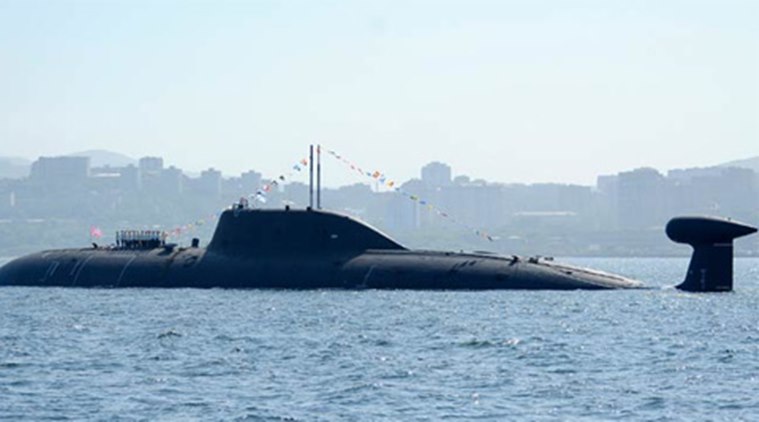India indigenous submarine complete patrol
November 7, 2018 | Expert Insights

India said on Monday its first domestically built nuclear-powered submarine had recently completed a “deterrence patrol”, giving it the capability to fire nuclear weapons from land, air and sea in the event of any “misadventure” by enemies.
India becomes the fourth country with a functional nuclear triad after the US, Russia, and China.
Background
A nuclear triad is a three-pronged military force structure that consists of land-launched nuclear missiles, nuclear-missile-armed submarines and strategic aircraft with nuclear bombs and missiles. Specifically, these components are land-based intercontinental ballistic missiles (ICBMs), strategic bombers, and submarine-launched ballistic missiles (SLBMs). The purpose of having this three-branched nuclear capability is to significantly reduce the possibility that an enemy could destroy all of a nation's nuclear forces in a first-strike attack.
INS Arihant is the lead ship of India's Arihant class of nuclear-powered ballistic missile submarines. The 6,000-tonne vessel was built under the Advanced Technology Vessel (ATV) project at the Ship Building Centre in the port city of Visakhapatnam.
Arihant was launched on 26 July 2009, the anniversary of Vijay Diwas (Kargil War Victory Day) by then Prime Minister of India, Dr. Manmohan Singh. After fitting out and extensive sea trials, on 23 February 2016, she was confirmed as ready for operations and was commissioned in August 2016.
INS Arihant is India’s first domestically-built nuclear-powered submarine. The hull for the vessel was built by L&T's Hazira shipbuilding facility. Tata Power SED (Strategic Engineering division) built the control systems for the submarine. The systems for the steam turbine integrated with the reactor are supplied by Walchandnagar Industries.
Analysis
India said on Monday its first domestically built nuclear-powered submarine had recently completed a “deterrence patrol”, giving it the capability to fire nuclear weapons from land, air and sea in the event of any “misadventure” by enemies.
With nuclear-armed China to its north and nuclear-armed Pakistan to its west - both of which India has fought wars with India’s nationalist prime minister, Narendra Modi, said the INS Arihant was a “fitting response to those who indulge in nuclear blackmail”. However, the PM did not elaborate on the threat of nuclear blackmail. “Amid an increase in the number of nuclear weapons in our surroundings, a credible nuclear deterrence is extremely important for our country’s security,” he told the crew of the submarine in a speech televised nationwide.
“Arihant is an open warning for the country’s enemies, for the foes of peace: don’t try any misadventure against India.”
Though India’s relations with China are warming, particularly in the area of trade, ties with Pakistan have nosedived under Modi, who has adopted a more assertive strategy towards the arch-rival. Modi said a successful month-long patrol by Arihant, which was commissioned in 2016, had completed India’s goal of having the capacity to deliver nuclear warheads with aircraft, missiles and submarines, 20 years after conducting its last nuclear tests.
India’s entry into a select club of countries with a functional nuclear triad will secure its role as a potential global power. However, India lacks the operational experience of running multiple nuclear-powered submarines and is, therefore, more likely to falter in basic maintenance operations.
Assessment
Our assessment is that INS Arihant’s first successful patrol showcases India’s domestic manufacturing capabilities. We believe that Indian shipyards and Defence Public Sector Undertakings (PSUs) are more than capable of producing high quality, reliable and efficient warships. We also feel that the Indian government may fast-track the development and deployment of future nuclear-powered naval vessels after the success of INS Arihant.








Comments